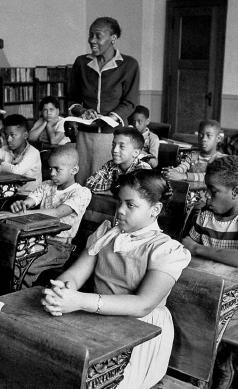Brown v. Board of Education originally came before the U.S. Supreme Court for argument in 1952. The justices were divided on the question and ordered reargument. Then, in September 1953, Chief Justice Fred Vinson died. Earl Warren assumed the mantle of chief justice and he persuaded his colleagues that the importance of their decision required a unanimous voice from the Court. Warren wrote a short, 10-page opinion for both lawyer and layperson to understand. Historians say that without Warren’s leadership, the Supreme Court may not have been able to speak with such a single voice. Justice Felix Frankfurter allegedly told two law clerks upon hearing of the death of Chief Justice Vinson: “This is the first indication that I have ever had that there is a God.” Frankfurter did not feel that Vinson was up to the challenge intellectually of serving upon the U.S. Supreme Court. The two also did not get along personally. The feelings were so bitter between the two men that Frankfurter would not even attend Vinson’s funeral.

Linda Brown (front) sits in her classroom in Topeka, Kansas. Her father, Oliver Brown, agreed to allow his family to be represented by the local NAACP in its fight against segregated schools. This led to Brown v. Board of Education. Carl Iwasaki/Time & Life Pictures/Getty Images.

